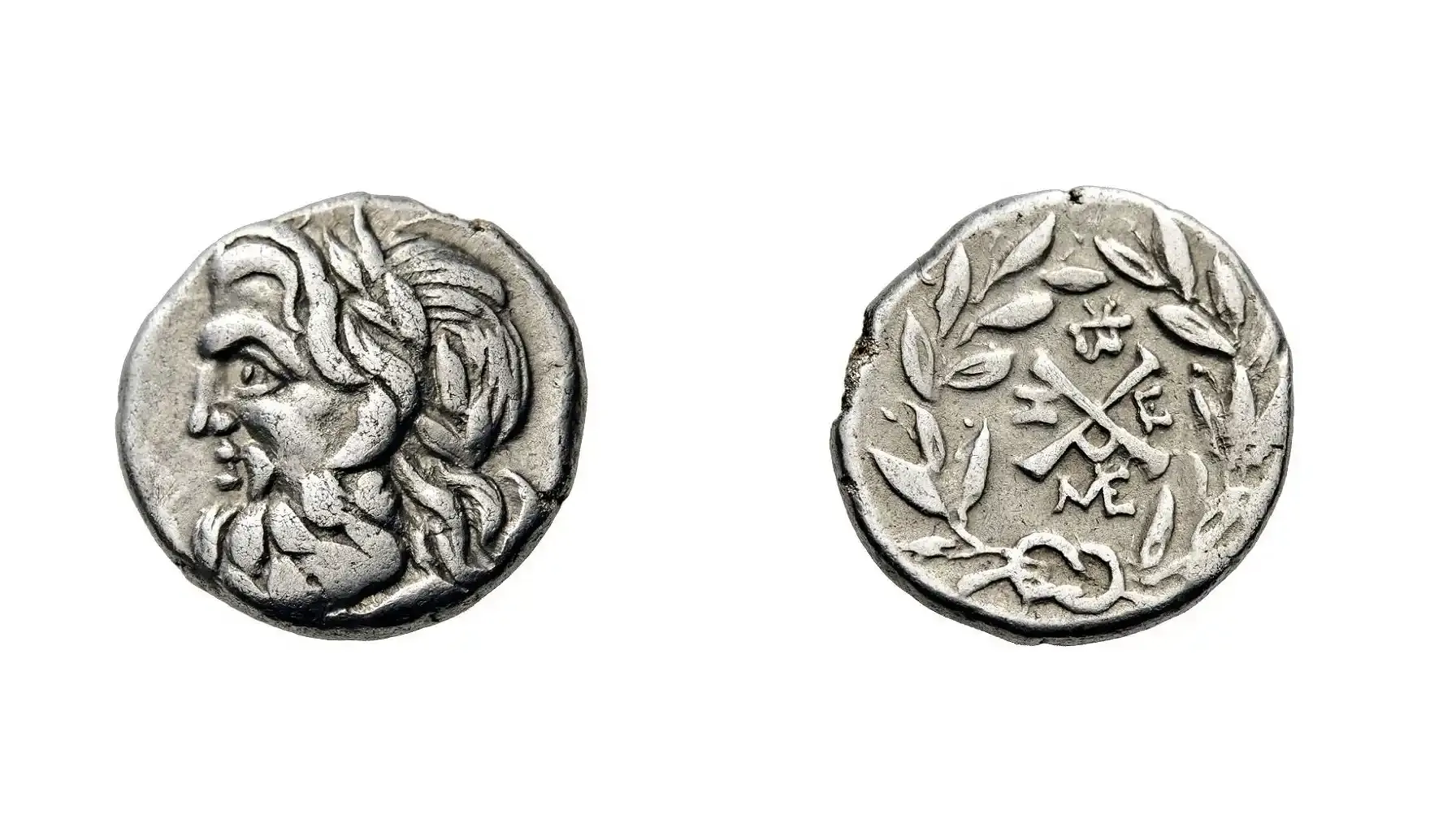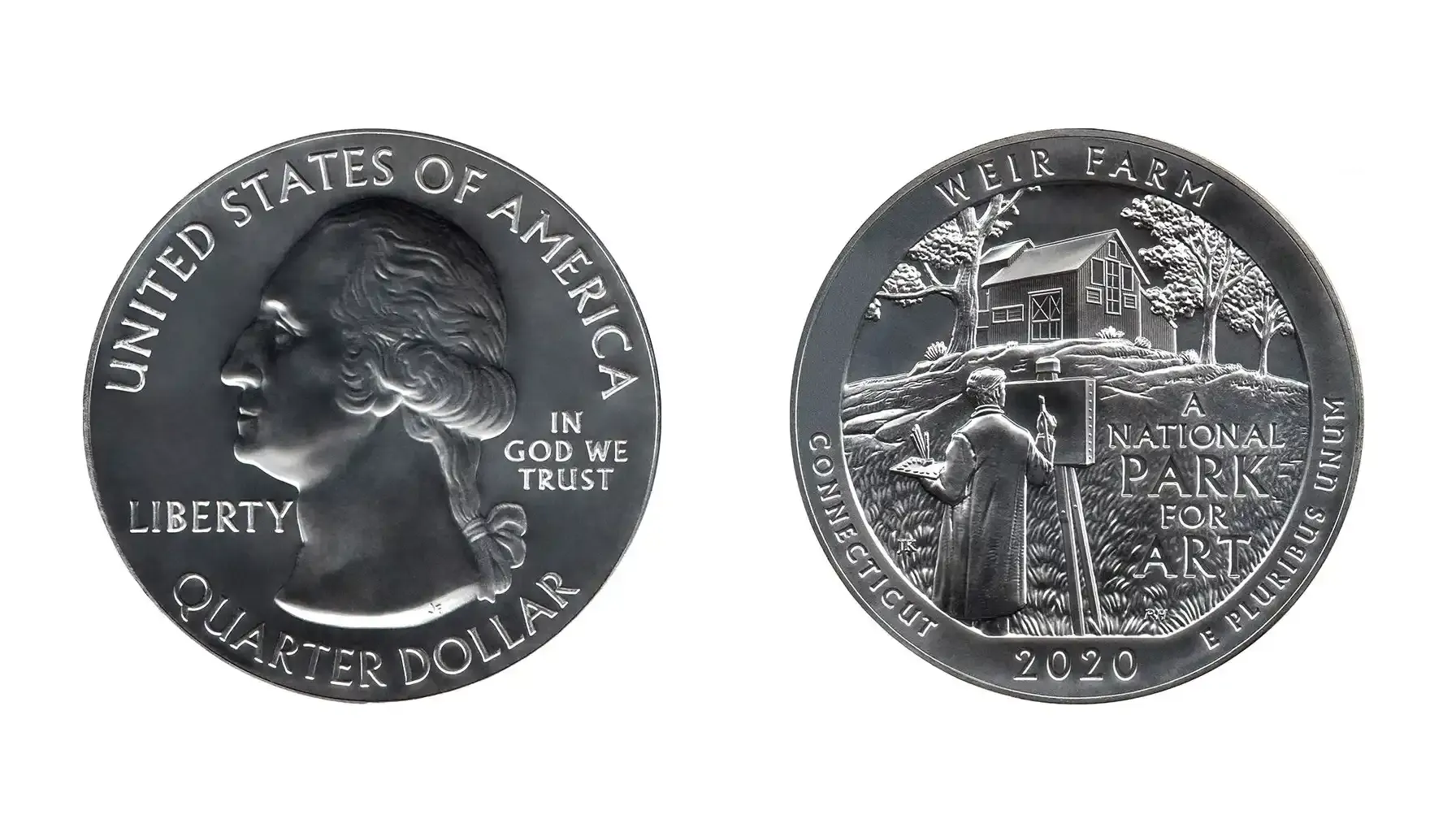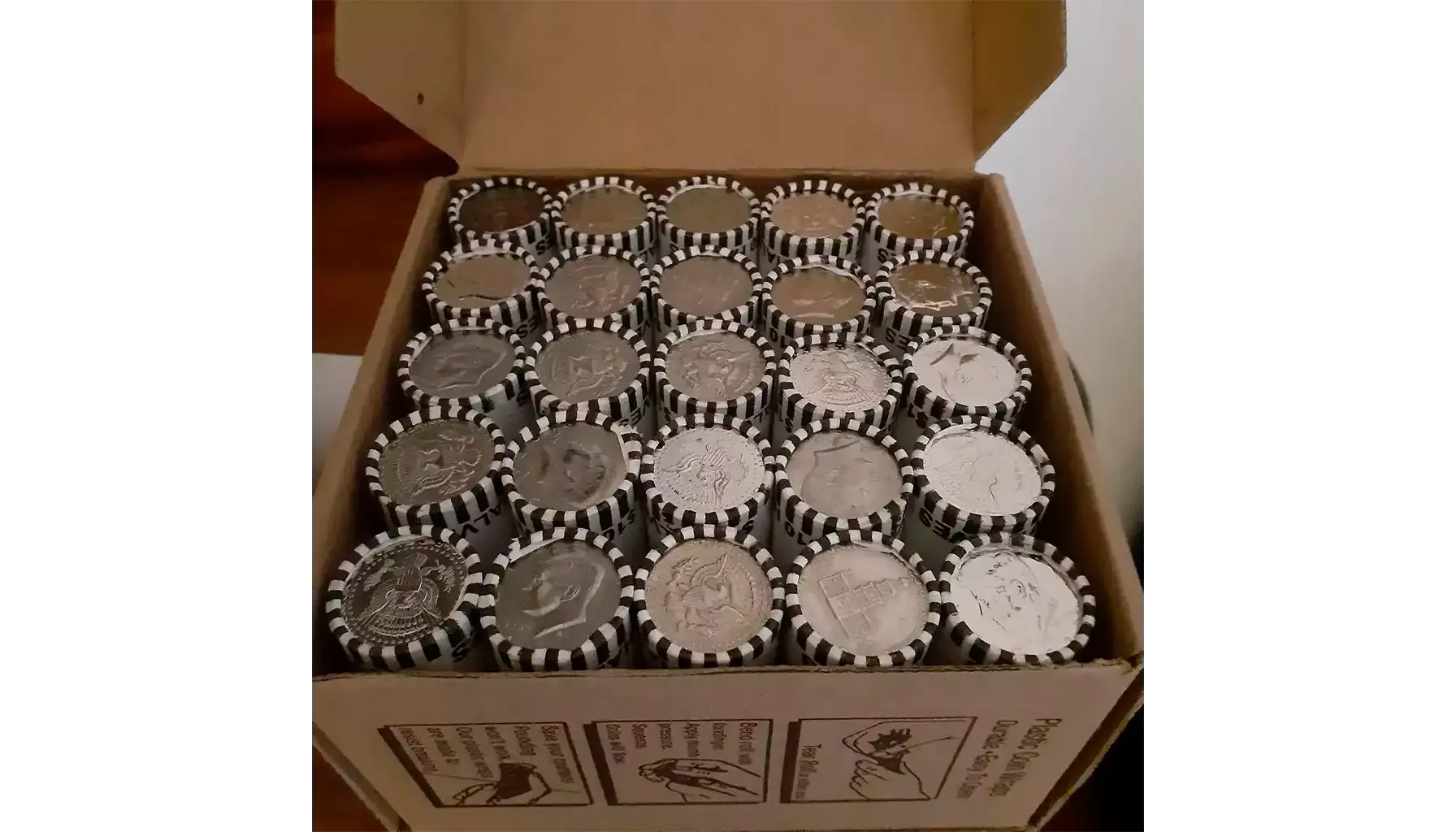Contents:
Each numismatic instance is a unique creation defined by its appearance, historical background, and the place it was born. Have you ever noticed a tiny letter stamped on the surface? This is exactly what indicates the origin of the coin. The mint mark is a vital component that may significantly influence current value and reveal its path before getting into circulation.
So, what are mint marks on coins? What do they generally mean, and which ones are the rarest of them all? Explore the basics of the monetary industry in the United States, identify coins, and create a collection with expertise and confidence in its numismatic potential through the years.

Definitions Come First: What Is a Mint Mark on a Coin?
So, what does a mint mark look like? A mint mark is a tiny letter (or symbol, if you like) that indicates the coin's manufacturing location. In particular, it serves as the mint's "signature" and helps one identify the exact place of origin.
In the United States, the main marks refer to "P" for Philadelphia, "D" for Denver, "S" for San Francisco, and "W" for West Point. Depending on the design and year, these marks are usually located on either the obverse or the reverse side (or, in some cases, remain absent at all). Here is a brief overview of all mint marks and their roles in the numismatic industry:
D – Dahlonega: Opened February 12, 1838, primarily for gold coins; closed in 1861.
C – Charlotte: Opened March 27, 1838, producing gold coins from Southern gold fields.
O – New Orleans: Opened May 8, 1838, serving the southern states; closed in 1909.
S – San Francisco: Opened April 3, 1854, during the California Gold Rush.
CC – Carson City: Opened February 11, 1870, specializing in silver coins from the Comstock Lode; closed in 1893.
D – Denver: Opened March 12, 1906, replacing Dahlonega’s D after its closure.
M – Manila: Opened July 15, 1920; the only US Mint outside the mainland (Philippine coins).
W – West Point: Opened July 29, 1974, known for producing special collector coins.
What does it mean when there is no mint mark on a coin? Well, first of all, we would like to specify that it is true that not every numismatic creation may bear a letter. Up until 1980, for instance, Philadelphia Mint coins were generally produced without any indication of this place.
Related article: Rare Coins to Collect in 2025.
A Brief History of Mint Marks
Since the time of the ancient civilizations of the Greeks and Romans, marks have been used to identify the provenance of coins. The reason was rather obvious: during production, one is not immune to making mistakes, which is why it was necessary to know which location could spread underweight or broken pieces. Governments (or their prototypes) were able to keep an eye on manufacturing processes and hold production sites responsible for consistency and quality.

As for the United States, mint marks were first introduced shortly after the Coinage Act of 1792 with the establishment of the nation's first mint locations. The first coins produced by these institutions bore marks such as “D” for Dahlonega, “C” for Charlotte, or “O” for New Orleans (the ones that supplemented the primary Philadelphia Mint).
As mints opened and closed throughout time, their symbols changed, and Denver (“D”), San Francisco (“S”), and West Point (“W”) became prominent players in the numismatic market. During a nationwide coin shortage in 1965–1967, the United States temporarily removed the mark to deter currency hoarding in advance. However, this initiative was meant to be suspended in the end.
What Is the Mint Mark Meaning? Why Are They Important?
The primary function of coin mint marks is to identify the location of the coin's production facility, which is quite logical and obvious. Nevertheless, these are also essential, for they let collectors and historians differentiate coins of the same design and year.
Consequently, the rarity and value of a coin can be affected by the substantial difference in production quantities of different locations. For instance, thanks to its limited production, the 1909-S VDB Lincoln Penny is far more valuable than the Philadelphia iteration from the same year.
Mint marks are just like keys, for they reveal (=open) information about historical events in addition to being rare. Certain mints created special editions with distinctive marks during times of war or economic crisis. They also draw attention to changes in currency production overtime on the geographic, aesthetic, and technological levels.
The Most Prominent Coins Struck by Each Mint
Although we cannot unanimously select the most outstanding examples of monetary art produced by certain mints (there are many), some instances can be considered interesting and captivating, since they regularly appear on the numismatic market. Anyway, for those concerned, here is a look at the standout creations from each mint.
Mint | Coin | Year | Description |
Dahlonega (D) | 1861-D Gold Dollar | 1861 | A small gold coin featuring Liberty’s profile and a wreath reverse; one of the last coins before the mint’s closure. |
Charlotte (C) | 1849-C Open Wreath Gold Dollar | 1849 | A rare gold dollar with a distinctive open wreath reverse, highly sought after by collectors. |
New Orleans (O) | 1893-O Morgan Silver Dollar | 1893 | A silver dollar showcasing Liberty’s profile on the obverse and an eagle on the reverse, iconic of New Orleans minting. |
San Francisco (S) | 1909-S VDB Lincoln Penny | 1909 | A historic penny featuring Lincoln’s profile and the designer’s initials “V.D.B.” on the reverse. |
Carson City (CC) | 1879-CC Morgan Silver Dollar | 1879 | A silver dollar with the CC mint mark, Liberty on the obverse, and an eagle reverse; prized for its rarity. |
Denver (D) | 1937-D Three-Legged Buffalo Nickel | 1937 | A nickel with a buffalo design missing a front leg due to a famous minting error, making it a collector’s favorite. |
Manila (M) | 1920-M One Centavo | 1920 | A copper coin with an anvil design symbolizing labor, marking the first coin from the only U.S. Mint overseas. |
West Point (W) | 2021-W American Eagle Silver Proof Coin | 2021 | A stunning silver-proof coin featuring a redesigned eagle reverse and unmatched craftsmanship. |
Sometimes, when you wish to learn more about numismatics, it might be reasonable to rely on reputable resources that may bring accurate and comprehensive information as soon as possible. One such tool that any coin enthusiast should be aware of is Coin ID Scanner, i.e., a modern application crafted specifically for numismatic purposes. Among its features, one may enjoy:
instant coin identification by photo;
error detection;
market analysis;
numismatic encyclopedia;
collection management;
community engagement;
…and even more! Download the app and try its benefits to take control of your collection for good!
Mint Marks and Coin Grading
The process of coin grading, which presupposes the total estimation of a coin's value, rarity, and condition, heavily relies on the US coin mint marks. In fact, it is interesting to observe how a small letter on the surface may change the game and turn an ordinary piece into a valuable asset.
Certain mint marks, e.g., CC, are usually associated with low-mintage instances. Besides, it is marks that may identify counterfeit or altered iterations. To do so, experts analyze the manufacturer’s location, style, and era-specific characteristics to verify authenticity. When unusual marks and exceptional grading are combined, the value of coins rises tremendously. Especially, when these provide enough information about the chronological and geographical setting of a coin's creation.
Read about how to avoid the most common collecting mistakes in our materials.
Fun Facts About Mint Marks
The First US Mint Mark: The first official mint mark on the US coin refers to the New Orleans Mint's "O". This occurred in 1838.
Mint Marks Were Once Hidden: To deter enemy forces from tracking down coin manufacturing facilities during World War II, the United States eliminated mint marks from coins at all.
Philadelphia Mint's Initial Absence: As soon as Philadelphia was considered the principal mint in the United States, coins made there lacked a mint mark for more than a century. It was not until 1942 that war nickels began to have the "P" mint mark.

Double Mint Marks: Because of an over-punching error, some units of currency, such as the 1944-D/S Lincoln Penny, may exhibit two mint marks at the same time, which is both bizarre and interesting, too.
Mint Marks in Unexpected Places: On older versions, mint marks were often concealed in hard-to-see places, like beneath the design features or on the reverse side close to the rim. These days, it is quite noticeable, though.
Each symbol left is a guide into its history and numismatic past, yet these are frequently overlooked or missed. Explore coins thoroughly, and let your collection thrive!



